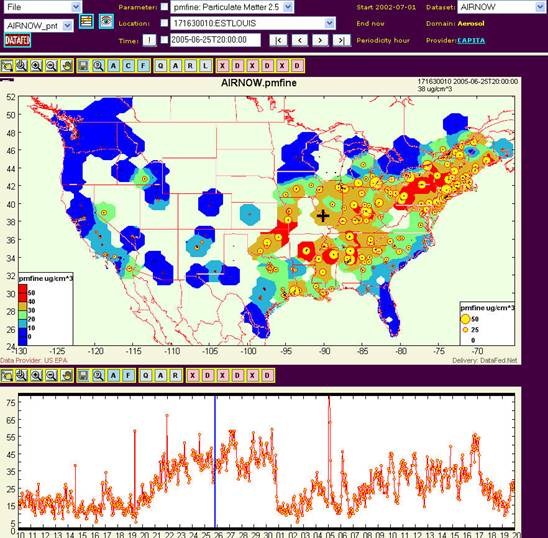Difference between revisions of "NSF Air Quality Observatory Proposal"
| Line 1: | Line 1: | ||
| − | This is a website devoted to the preparation for a proposal for an Air Quality Observatory (AQO) prototype, | + | This is a website devoted to the preparation for a proposal for an Air Quality Observatory (AQO) prototype, NSF solicitation: [http://www.nsf.gov/funding/pgm_summ.jsp?pims_id=13517&org=NSF&from=fundlink Cyberinfrastructure for Environmental Observatories]. The open collaborative approach facilitated by this interactive wiki allows each participant to add, edit, or comment on any content. |
__FORCETOC__ {{template:Backlinks}} | __FORCETOC__ {{template:Backlinks}} | ||
Revision as of 00:31, January 16, 2006
This is a website devoted to the preparation for a proposal for an Air Quality Observatory (AQO) prototype, NSF solicitation: Cyberinfrastructure for Environmental Observatories. The open collaborative approach facilitated by this interactive wiki allows each participant to add, edit, or comment on any content.
| Links to: Air Quality Cluster > AQO Proposal Main Page > Proposal | Proposal Discussion| NSF Solicitation | NSF Solicitation Discussion | People |
Links
NSF Proposal ResponseEnvironmental Observatories: Environmental observatories, EO, are spatially extended, terrestrial, atmospheric and aquatic observing systems. EOs will use emerging sensor and networking technologies and deliver an extended range, type and quality of data to environmental researchers. The effectiveness of these observatories will hinge on broad availability of data and analysis tools and ease of data and tools, discovery and use. Environmental systems research requires interdisciplinary approaches and access to multi-disciplinary datasets. A particularly pressing need is the combination of data from different observing systems. The community has identified many remaining issues on how to construct the cyberinfrastructure for environmental observatories. Example Challenges: Integrating multiple, existing information infrastructures in different environmental research disciplines. Bridging the semantics of multiple disciplines within environmental research. Extend the resources for orchestration by workflow tools; assist users in developing complex, multi-stage processing tasks. Support event-detection/triggered-responses in real-time data streams. Enabling the creation of user-configurable virtual observatories that bring together sensors from different observing systems. Additional NSF Guidance: Focus on prototype development, viability, utility demo; not on longer operation/maintenance. Involve professionals versed in IT and Environmental Research; provide training opportunities. Developed software to be ready for reuse: make it robust, documented, disseminated.
Project Summary - Early Draft Example Challenges: Integrating multiple, existing information infrastructures in different environmental research disciplines. Bridging the semantics of multiple disciplines within environmental research. Extend the resources for orchestration by workflow tools; assist users in developing complex, multi-stage processing tasks. Support event-detection/triggered-responses in real-time data streams. Enabling the creation of user-configurable virtual observatories that bring together sensors from different observing systems. Additional NSF Guidance: Focus on prototype development, viability, utility demo; not on longer operation/maintenance. Involve professionals versed in IT and Environmental Research; provide training opportunities. Developed software to be ready for reuse: make it robust, documented, disseminated. |
NSF Proposal |
